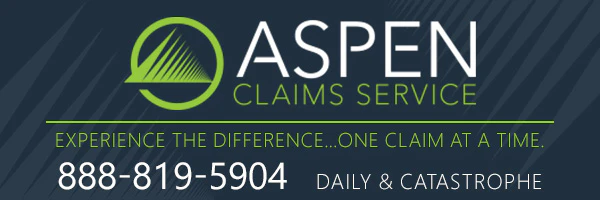
Fraud Prevention Strategies for High-Risk Claims
Monday, September 30th, 2024 Claims Pages Staff Proactive Fraud Detection Strategies for Claims AdjustersNot all insurance claims carry the same level of fraud risk. Certain types of claims, such as those involving bodily injury, property damage, or disaster-related incidents, are more susceptible to fraud schemes. These high-risk claims demand extra vigilance from adjusters, who must adopt specific strategies to detect and prevent fraud before it escalates. In this article, we explore the tactics that claims adjusters can use to safeguard their organizations from targeted fraud in these vulnerable areas.
What Makes a Claim High-Risk?
High-risk claims are typically those that involve significant payouts or situations where verifying the legitimacy of the claim is more challenging. Several factors can elevate the risk of fraud:
Bodily Injury Claims: These claims often rely heavily on subjective evidence, such as the claimant’s description of pain, which is difficult to verify through medical records alone.
Property Damage Claims: Fraudsters may exaggerate or fabricate property damage, particularly in cases where damage is hard to assess, such as water damage or structural issues.
Disaster-Related Claims: Natural disasters create a surge in claims, making it easier for fraudsters to blend in with legitimate claimants. The urgency and volume of these claims also strain resources, which can lead to less thorough investigations.
Understanding why certain claims are considered high-risk helps adjusters approach these cases with the necessary level of caution.
Identifying Red Flags in High-Risk Claims
When handling high-risk claims, it’s important to be aware of red flags that might indicate fraudulent activity. While each claim is unique, several warning signs are common across high-risk categories:
- Inconsistent or vague details: Claimants providing inconsistent accounts of how the incident occurred or vague descriptions of their injuries or damage should raise concern. Pay attention to any discrepancies between their initial statements and subsequent reports.
- Unusual timing: Claims made shortly after an increase in coverage, or immediately after a policy is issued, should be treated with suspicion. Fraudsters often try to capitalize on new policies with fabricated or exaggerated claims.
- Excessive urgency: While prompt claims filing is common in legitimate cases, overly aggressive or urgent claimants may be attempting to push through a fraudulent claim before red flags can be raised.
- Multiple claims: Claimants with a history of frequent or similar claims, especially in different locations or with different insurers, may be involved in a larger fraud scheme.
By recognizing these red flags early, claims adjusters can prioritize high-risk claims for more in-depth investigation and reduce the likelihood of fraudulent payouts.
Fraud Prevention Strategies for High-Risk Claims
In addition to identifying red flags, there are several proactive strategies that claims adjusters can use to protect their organizations from targeted fraud in high-risk claims.
1. Implement a Layered Investigation Approach
High-risk claims require a more thorough investigation process. Instead of relying on a single point of verification, implement multiple layers of scrutiny. This could include:
- Requesting detailed documentation and corroborating evidence (e.g., medical records, repair invoices, or photos).
- Conducting interviews with all involved parties to identify any inconsistencies or contradictions.
- Utilizing surveillance or private investigation services to confirm or refute the claimant’s account of events.
This layered approach ensures that no single piece of evidence is relied upon too heavily, reducing the chances of fraud slipping through.
2. Leverage Technology for Risk Assessment
Modern claims management systems can use data analytics and artificial intelligence (AI) to assess the likelihood of fraud. These technologies analyze historical data, patterns, and known fraud schemes to assign risk scores to each claim. Claims flagged as high-risk by these systems can be routed for additional review or investigation.
Predictive analytics tools can help adjusters identify claims that match known fraudulent patterns, such as claimants with multiple similar claims or property damage that doesn’t align with reported weather conditions. AI-powered systems can also automate parts of the investigation, cross-referencing data from various sources to spot inconsistencies faster than human reviewers alone.
3. Collaborate with External Experts
In cases where internal investigations reach a limit, collaborating with external experts can be critical to preventing fraud. Engage professionals such as:
- Medical experts: In bodily injury claims, consulting with medical professionals can help verify whether the claimant’s reported injuries are consistent with the incident details.
- Forensic engineers: In property damage claims, forensic experts can assess whether the reported damage aligns with the cause (e.g., structural engineers investigating collapse claims).
- Law enforcement: For larger-scale fraud schemes or disaster-related fraud, law enforcement agencies can provide additional investigative resources and legal authority to pursue fraudsters.
Building relationships with these external experts ensures that claims adjusters have access to specialized knowledge when needed.
4. Conduct Post-Claim Audits
One of the most effective ways to improve fraud detection is by conducting post-claim audits. After a high-risk claim has been processed, reviewing the case in detail can reveal patterns or missed red flags that could inform future investigations. These audits provide valuable feedback for adjusters and help refine your organization’s fraud prevention strategies over time.
Strengthening Your Organization Against Fraud
While high-risk claims carry an inherent danger of fraud, claims adjusters who employ a proactive and strategic approach can significantly reduce their organization’s exposure. From recognizing red flags early to leveraging advanced technology and external expertise, these strategies help fortify your claims process against fraud.
By taking extra precautions when handling high-risk claims, adjusters not only protect their organization from financial losses but also ensure that legitimate claimants receive the attention and support they deserve.
Fraud detection is an ongoing battle in the insurance industry, but with the right strategies, claims adjusters can significantly reduce the risks. Our series, "Proactive Fraud Detection Strategies for Claims Adjusters," is packed with expert advice and practical tools to help you stay ahead. From understanding common fraud schemes to utilizing the latest technology, our series will empower you to improve your fraud detection capabilities and ensure your claims process is both secure and efficient.

